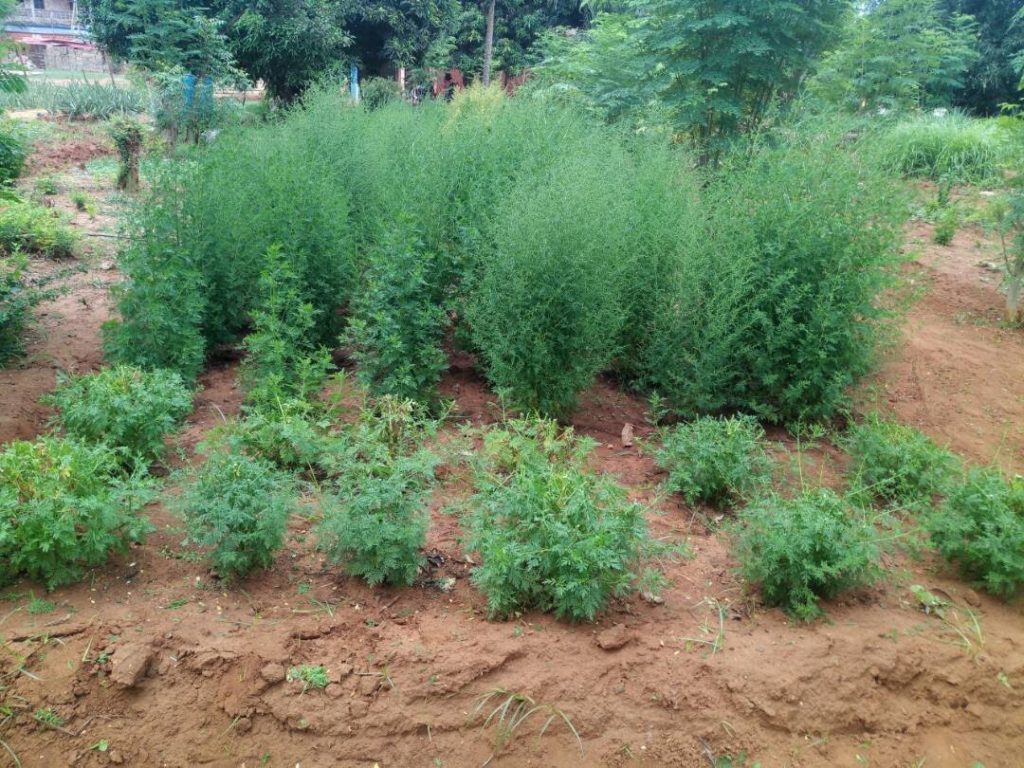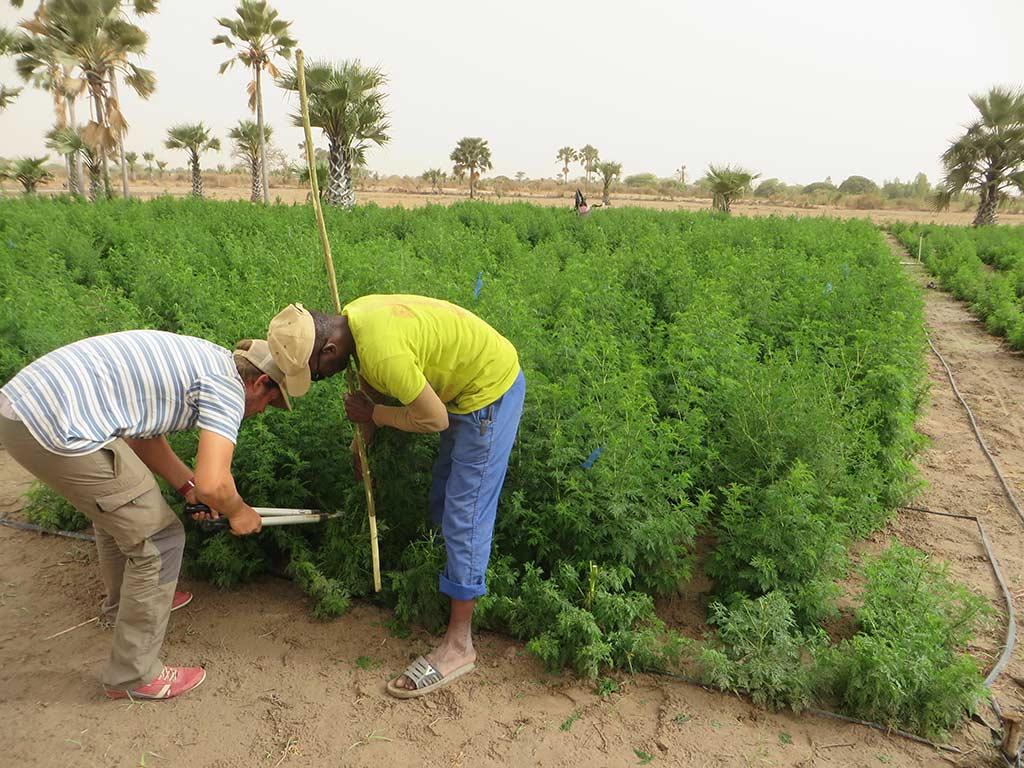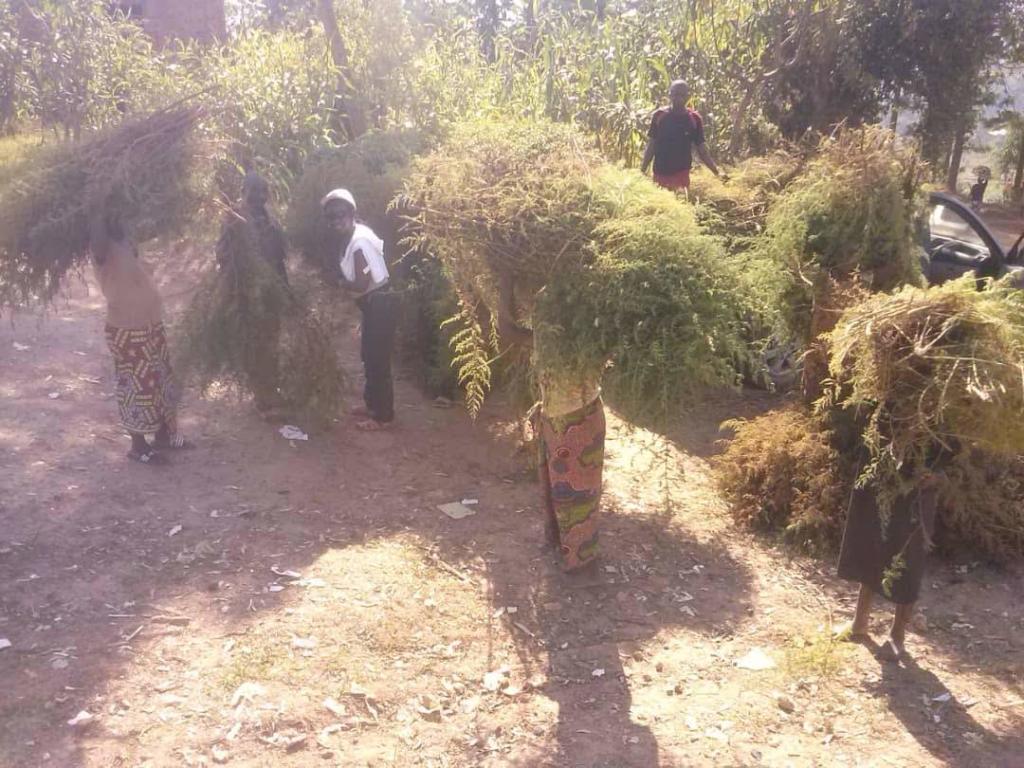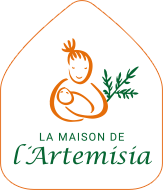Harvesting Artemisia annua
Download in pdfImportant information:
One plant can produce up to 1.5 kg of fresh leaves and stems giving 375 g dry material per plant.
Artemisia annua grows stronger after cutting. A study in Benin has shown that topping (coppicing) results in more productive plants with more branches. A study in Senegal demonstrated that an intermediate cut can harvest up to 2 times more biomass and is more profitable than a single final cut with the right plant growth! [1,2]
Harvests from topping/pruning and intermediate cuts are processed and used for their health benefits as well as the final harvest. According to feedback from our network, and considering the fact that Artemisia herbal tea is a polytherapy, there appears to be no loss of efficacy with harvests made throughout the entire elongation stage of the plant. Since 2016, herbal tea harvested just 2 weeks after transplanting has been used successfully to treat malaria in Benin. The constituents of the plant change during other phenological stages.
Artemisia annua is rich in active ingredients and is therefore effective when harvested before and during flower production. Flower buds are very small, round and green. Flowers are very small, yellow and delicate. Once the flowers wilt and during fruiting, the active molecule content in the plant drops rapidly! The plant should not be used for medicinal purposes from this point!
Plants that flower early due to stress or lack of adaptation must be harvested before fruiting. There is no point in harvesting their seeds because it is their genetics that prevent them from growing well under local growing conditions. Their seeds will therefore not produce suitable and productive offspring.
Leave the finest and most productive plants to flower to collect their seeds! (See File Seed Production). Identify plants to be reserved for seed collection before the final cut and do not harvest them for herbal tea production.
WHO strongly advises against harvesting in the rainy season because excess moisture promotes microbial fermentation and mould growth! [3]. La Maison de l’Artemisia recommends adjusting the growing calendar to harvest in the dry season. (See File Growing Trial : choice of cultivar and growing period).
The harvest should be carried out in the driest possible conditions (ideally in the middle of the day) and plant material should be dried immediately. [3]
All hygiene rules must be strictly complied with.
Topping/pruning
After 2 weeks in the field, when the plants reach a height of 30 to 50 cm, plants can be topped or pruned by cutting 5 to 10 cm off the top. This topping will produce more productive plants with more branches.
This harvest can be used for its health benefits as well as the final harvest.
Intermediate cut
About 2 months after transplanting, when the tallest plants in the field reach 1 m in height.
NB: This height indication is for guidance only. Artemisia plants vary enormously in height within the same field. It is not necessary to wait until they all reach 1 m to cut. Some will be only 80 cm or 40 cm but the height of the largest plants justifies harvesting.

if there is a lot of dust and soil on the plants, rinse them in the morning of the day before harvest by watering abundantly with clean water.
cut the plants to 30 cm high with clean and dry secateurs.
IMPORTANT: Do not cut any lower or the Artemisia will die!
Be sure to leave some green (non-woody part) to allow the plant to grow back
any lower branches (which will turn yellow quickly).
Dirty lower branches are a second-choice product to be dried and processed separately for veterinary use (see Animal Health).
yellow leaves that dry out or leaves damaged by fungi, pests and other diseases.
2 large handfuls of compost around the base of the plant to promote the recovery of development after cutting.

This method doubles yield in the dry season but does not appear to work well in wet climates!
Cutting to 30 cm in wet climates encourages development of diseases. In these conditions it is therefore recommended to lightly prune back outer branches purely to encourage ramification to increase biomass production.
Several intermediate cuts are possible before the final harvest if the plants again reach a height justifying another harvesting (1 m high for tallest plants in the field) and if the climate allows for the crop to stay in the field for another 2 months.
Final cut
Approximately 5 to 6 months after transplanting, during flowering OR before the rainy season.
if there is a lot of dust and soil on the plants, rinse plants in the morning of the day before harvest by watering abundantly with clean water!
the plants at the base with a clean and dry machete.
roots from the field as they reduce yield of subsequent crops (due to their allelopathic effect).
reduce watering by half after flowering to encourage the production of germinating seeds.
NB : Roots can be composted or used to produce a mother tincture to aid digestion. To make the tincture, dry-clean the roots with a wire brush or scrubbing brush. Roots can also be soaked in water and brushed to remove any soil. Wipe off excess moisture and leave to dry. Macerate for at least 3 weeks in alcohol of choice.

Care should be taken to ensure that no foreign matter, weeds or toxic plants are mixed with the harvested medicinal plant material. Harvested material that is damaged or decomposed should be retrieved and disposed of during and after harvesting to avoid microbial contamination and loss of product quality. [3]
Harvested plant material must not be piled up on the ground. Contact with soil should be avoided to minimise the microbial load of harvested medicinal plant materials. If necessary, large pieces of clean cloth can be laid on the ground to protect the crop. [3]
Harvested plant material must be collected in containers such as bags, baskets, wheelbarrows or trailers that are clean and dry. Residual moisture and possible contamination by soil or other materials must also be avoided. [3]
Equipment should be stored in a dry, pest-free place out of the reach of livestock and domestic animals. [3].
Mechanical damage or compaction of raw medicinal plant materials, such as from overfilling or stacking of bags, which may lead to spoilage or other loss of quality, should be avoided. [3]
Bibliography:
(Effect of urea and topping on phytomass production and phenological development of Artemisia annua Anamed in South Benin). Available at: https://valtramed.com/wp-content/uploads/2017/11/memoire%20Darling.pdf
2. Van Damme P. Optimisation de la production de l’armoise annuelle (Artemisia annua L.) sur le domaine de l’organisation « Le Relais – Sénégal » à Yendane (région de Thiès, Sénégal). Mémoire de master bioingénieur en sciences agronomiques, sous la direction de Pr. Guy Mergeai, Gembloux, Gembloux Agro-Bio Tech (ULiège). 2016 (Optimisation of production of annual mugwort (Artemisia annua L.) in the field at “Le Relais – Senegal)
3. World Health Organisation. WHO guidelines on good agricultural and collection practices (GACP) for medicinal plants. 2003. Available at: https://www.who.int/medicines/publications/traditional/gacp2004/en/










